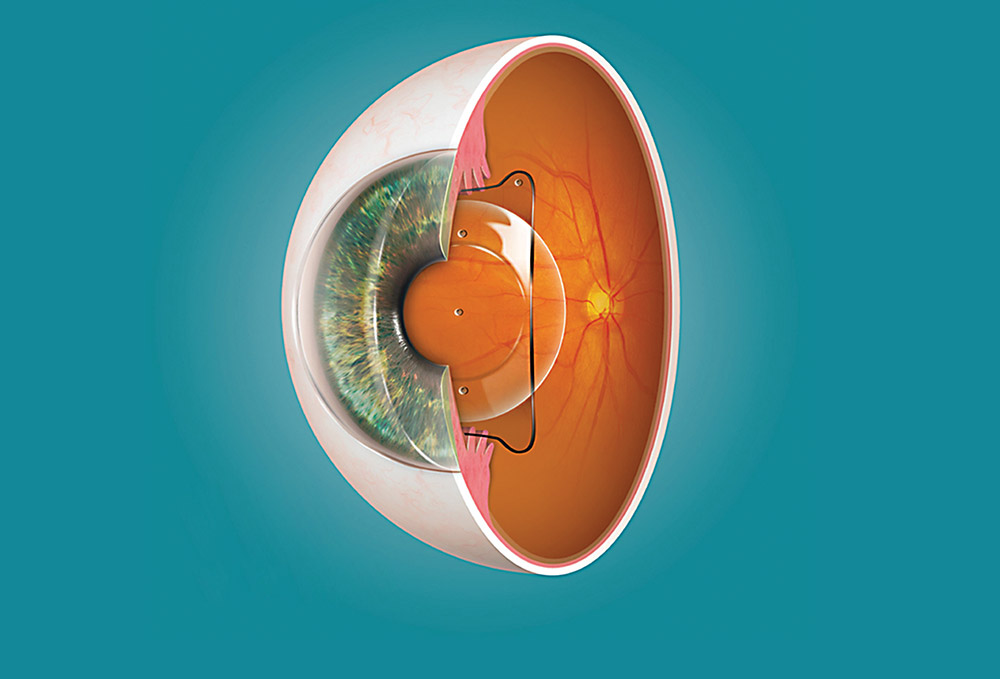1/ Eye strain and glare in the evening: A sign of visual overload

Eye strain at the end of the day due to excessive focusing on screens – an early sign of visual fatigue
In today’s digital lifestyle, our eyes are constantly exposed to electronic screens, artificial light, and intense focusing demands. Feeling tired eyes, forehead tension, or glare at the end of the day is becoming increasingly common. However, many people ignore these signs, unaware that they may indicate prolonged visual overload – a condition that, if left untreated, could lead to long-term vision issues.
2/ Why do eyes tend to hurt and become sensitive in the evening?
As natural light fades during the afternoon and evening, pupils dilate to adapt to dim lighting. This dilation allows more light into the eye and enhances any internal optical distortions. If you have myopia, astigmatism, or mild focusing issues, symptoms such as glare, halos, and blurry vision often worsen by day’s end. Additionally, after long hours of screen use, your eye’s focusing system – particularly the ciliary muscle – becomes fatigued and loses its ability to relax properly, contributing to heaviness, strain, and blurred vision in the evening.
3/ Everyday habits that overload your eyes

- Prolonged use of computers or smartphones
- Lack of visual breaks throughout the day
- Working in environments with poor natural lighting
- Wearing incorrect or outdated glasses
- Improper posture or overly bright screen settings
4/ Common signs that your eyes are overloaded
| Visual symptoms | Common causes |
|---|---|
| Forehead and eye strain | Prolonged focusing without rest |
| Glare when driving in the evening | Pupil dilation, increased light scattering |
| Blurred vision later in the day | Undiagnosed or uncorrected astigmatism |
| Frequent eye rubbing to regain focus | Dry eyes, poor tear film quality |
| Halos around headlights and streetlights | Incorrect light convergence on the retina |
5/ Underlying conditions that may be involved
- Astigmatism that hasn’t been diagnosed or corrected properly
- Dry eyes due to reduced tear production or Meibomian gland dysfunction
- Focusing fatigue from continuous digital device use
- Macular misalignment or early-stage cataracts
6/ Solutions: From daily habits to advanced vision correction
- Follow the 20-20-20 rule when using screens
- Use blue-light filtering glasses during long work sessions
- Supplement your diet with lutein, omega-3, vitamin A, and zinc
- Have your eyes checked regularly to evaluate focusing and tear quality
- Consider Phakic ICL for severe myopia, astigmatism, or persistent glare
7/ Phakic ICL – A clear vision solution from day to night

Phakic ICL positioned behind the iris – a vision correction solution that preserves the cornea and improves night vision
Phakic ICL is a phakic intraocular lens placed behind the iris and in front of the natural lens. It corrects refractive errors like myopia and astigmatism without cutting the cornea – unlike LASIK. Since it does not affect the corneal surface, Phakic ICL does not cause dry eye, one of the major factors contributing to glare at the end of the day. Its intelligent design supports stable vision even when pupils dilate at night or during light transitions. Research shows that 99.4% of patients would choose Phakic ICL again if given the choice.
8/ Comprehensive diagnosis and treatment at TD Eye
At TD Eye, you’ll receive a thorough eye exam using high-precision diagnostic tools for refraction, tear film, and night-time pupil evaluation. Based on your personalized results, our doctors will recommend the most effective path forward – from visual therapy to Phakic ICL implantation – ensuring long-lasting comfort and clarity.
9/ Conclusion
Evening eye strain and glare are not just common annoyances – they can be warning signs of deeper visual fatigue or early refractive issues. Don’t ignore the signs. Take action early with healthy habits, timely checkups, and modern solutions like Phakic ICL to keep your eyes clear and comfortable from morning to night.

 vi
vi 14-Jul-2025
14-Jul-2025











 0916.741.763
0916.741.763 Appointment
Appointment